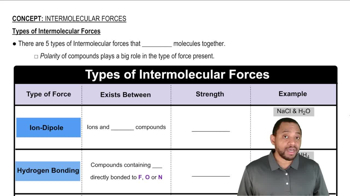(a) What is the electrostatic potential energy (in joules) between two electrons that are separated by 62 pm?
(b) The force of gravity acting between two objects is given by the equation F = G * (m1 * m2) / d^2, where G is the gravitational constant, G = 6.674 * 10^-11 N*m^2/kg^2, m1 and m2 are the masses of the two objects, and d is the distance separating them. What is the gravitational force of attraction (in Newtons) between the electron and proton? (c) How many times larger is the electrostatic force of attraction?
 Verified step by step guidance
Verified step by step guidanceKey Concepts
Gravitational Force

Electrostatic Force

Comparison of Forces

(b) What is the change in potential energy if the distance separating the two electrons is increased to 1.0 nm?
(c) Does the potential energy of the two particles increase or decrease when the distance is increased to 1.0 nm?
(a) The electrostatic force (not energy) of attraction between two oppositely charged objects is given by the equation F = k (Q1Q2/d2) where k = 8.99⨉109N-m2/C2, Q1 and Q2 are the charges of the two objects in Coulombs, and d is the distance separating the two objects in meters. What is the electrostatic force of attraction (in Newtons) between an electron and a proton that are separated by 1⨉102 pm?
A sodium ion, Na+, with a charge of 1.6⨉10-19 C and a chloride ion, Cl - , with charge of -1.6⨉10-19 C, are separated by a distance of 0.50 nm. How much work would be required to increase the separation of the two ions to an infinite distance?
